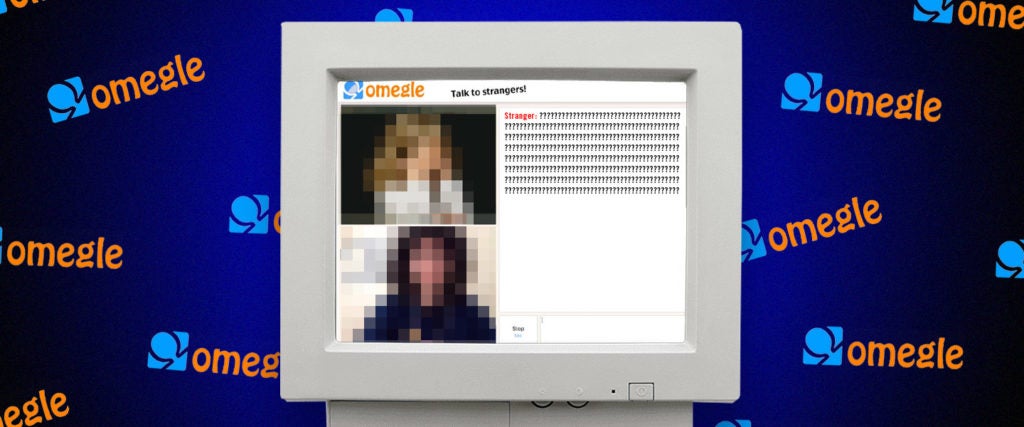The internet is still a scary place, but not in the way it used to be. The popular threat isn’t that some pervert is going to meet your kid in a chatroom and abduct them (though, this certainly still happens), it’s that YouTube is going to auto-play some alt-right conspiracy theorist after your kid wraps up watching their favorite unboxing vlogger. The thrills that a young person can get from the internet have been chipped away to a small monopoly of sites that have encouraged them to display every modicum of their personal lives, including their precise geographic location. The internet is still scary in that it’s dystopian, but what the recent resurgence of Omegle proves is that teens want a taste of the internet’s old brand of scary, from a time where anonymity still had value.
Founded in 2009, Omegle was initially popular as a place for groups of high schoolers and college students to prowl in groups, often encountering men with their cameras strategically cast upon their erect penises. The site, whose tagline is “Talk to strangers,” served as a place to test the limits of the “stranger danger” ideology most of us who began using the internet in the early aughts had been fed. Interest in the site peaked in 2013 then dipped to its lowest in 2018. Once quarantine began in 2020, though, interest steadily grew once more. After October, Omegle saw a sharp increase in traffic, growing to nearly twice the popularity of 2013. Currently, that popularity continues.
@littlemoefades
On TikTok, people film themselves being matched in video calls with random people, documenting the reactions they receive to their unusual behavior or looks. Some popular TikTokers go on Omegle and notify their followers, who in turn go on the site in hopes of finding them. Among the most popular videos are people playing creepy pranks where they pretend to be possessed, or ones where they’re matched with sassy children.
In part, Omegle is popular again simply because it’s trending on TikTok. But for every viral Omegle TikTok, thousands of mundane interactions occur. As my brief revisitation with Omegle’s text chat function reminded me, it’s far more common to have one’s conversation immediately cancelled by the stranger than it is to actually have a conversation. Nevertheless, it offers the opportunity for a completely anonymous, randomized internet encounter that seems nearly impossible to find in our current era. The desire for this is one that TikTok itself has primed us for — like scrolling on TikTok, we never know what we’ll see next on Omegle.
@jasminehorsman
After several attempts, I came across one person willing to have more than five lines of conversation with me. Most others switched to new strangers upon learning that I did not myself have a penis and was not horny. I explained to my new friend/stranger how I believed Omegle was becoming popular again because people wanted to experience what the internet was like when people were still afraid. “That era was killed by things like Uber where you literally meet someone on the internet and get in a stranger’s car,” they tell me.
@sarahduffy0011 Yup #omegle #foryou #foryoupage #fyp #FallDIY #ThatWitch #xyzbca
The tech we use has demanded a lack of privacy and desensitization to old “strangers on the web” fears. It has prepared us perfectly for the resurgence of Omegle, now that we’re no longer afraid of what the platform might show us yet desperately want something to excite us again. On the internet, everyone knows exactly who you are. On Omegle, though, there’s the sense you can be a stranger again — if only until you go viral on TikTok.

